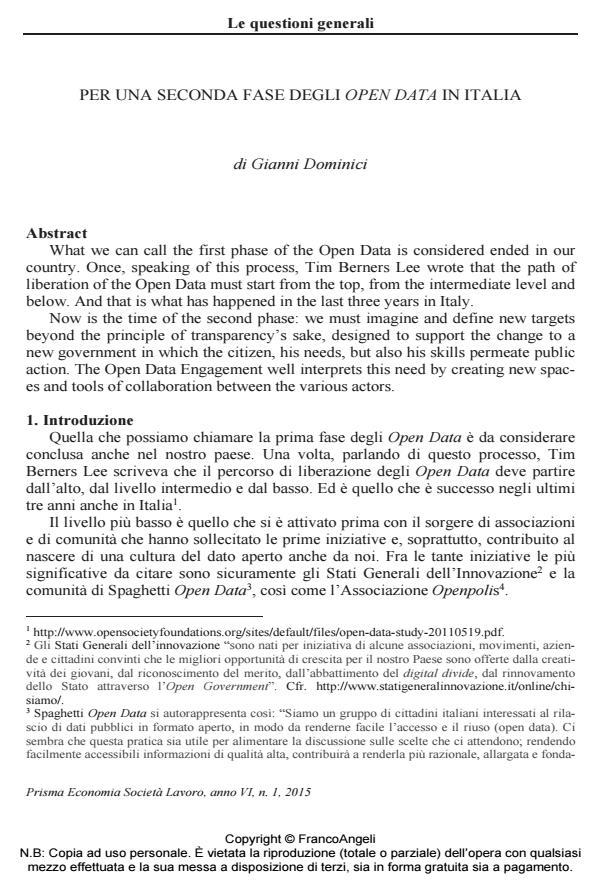Per una seconda fase degli open data in Italia
Journal title PRISMA Economia - Società - Lavoro
Author/s Gianni Dominici
Publishing Year 2015 Issue 2015/1 Language Italian
Pages 9 P. 55-63 File size 85 KB
DOI 10.3280/PRI2015-001005
DOI is like a bar code for intellectual property: to have more infomation
click here
Below, you can see the article first page
If you want to buy this article in PDF format, you can do it, following the instructions to buy download credits

FrancoAngeli is member of Publishers International Linking Association, Inc (PILA), a not-for-profit association which run the CrossRef service enabling links to and from online scholarly content.
What we can call the first phase of the Open Data is considered ended in our country. Once, speaking of this process, Tim Berners Lee wrote that the path of liberation of the Open Data must start from the top, from the intermediate level and below. And that is what has happened in the last three years in Italy. Now is the time of the second phase: we must imagine and define new targets beyond the principle of transparency’s sake, designed to support the change to a new government in which the citizen, his needs, but also his skills permeate public action. The Open Data Engagement well interprets this need by creating new spaces and tools of collaboration between the various actors.
- Dominici G., Pieroni, M., (2007) Le città digitali in Italia, 9° Rapporto, FrancoAngeli, Milano
- Dominici G., Pieroni M., (2013) ICity Rate. La classifica delle città intelligenti italiane, FORUM PA edizioni, Roma
- Goldstein B., Dyson L., (2013) Beyond Transparency, Open Data and the Future of Civic Innovation, Code for America Press, San Francisco, CA
- Gurstein M., (2011) “Open Data: Empowering the Empowered or Effective Data Use for Everyone?”, First Monday, 16(2)
- Tauberer J., (2012) Open Government Data, edizione Kindle, posizione 763
Gianni Dominici, Per una seconda fase degli open data in Italia in "PRISMA Economia - Società - Lavoro" 1/2015, pp 55-63, DOI: 10.3280/PRI2015-001005